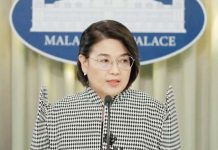 AS OF yesterday, the exchange rate of the US dollar against the Philippine peso had climbed to P53.53. Good news for the dollar earners?
AS OF yesterday, the exchange rate of the US dollar against the Philippine peso had climbed to P53.53. Good news for the dollar earners?
Unfortunately, it’s what has made our peso the “worst-performing” currency in the world today. You see, inflation means weaker buying power of the peso. Proof: Our minimum jeepney fare will soon jump from P6.50 to P9.
I was a toddler in the 1950s when a dollar was worth two pesos, and the minimum wage of four pesos a day was good enough to feed a family of five.
The Philippines was then the second most prosperous nation in Asia – second only to Japan. The minimum wage was only P120 per month, but it could buy much more goods then than P15,000 today.
China was not yet a global economic power, having just fallen to communism in 1949 and was called “the sleeping giant”.
Even in the 1960s, we were still way ahead of Taiwan. One peso at that time was stronger at seven Taiwan dollars. On the contrary today, our peso (PHP) is much weaker at TWD 0.57.
President Carlos P. Garcia – whose term covered the 1957-61 period – tried to boost local products through his Filipino First policy, which restricted imports of products that were locally available and encouraged the manufacturing sector to export whenever possible.
An Ilonggo entrepreneur responded to that challenge by embarking on canning industry. His Lix Products (somewhere in Mandurriao, Iloilo City) canned mouth-watering pork and beef delicacies such as adobo, menudo, sarciado and mechado. Still etched in my mind is the memory of those days when my late mother would wait on the street once a week for the truck selling the said goods around Panay Island as scheduled.
After Garcia came President Diosdado Macapagal, who imposed “de-control” – a policy that pegged low price ceilings on basic commodities to minimize monetary inflation.
Even when President Ferdinand Marcos imposed martial law in 1972, the economy initially resisted external pressure until the subsequent oil crisis which, coupled with the scarcity of rice, caused sudden price spirals.
The assassination of Senator Benigno “Ninoy” Aquino in 1983 destabilized the peso from seven to 13 per US dollar, kicking off a downward trend.
The People Power or EDSA Revolution that restored democracy in 1986 and installed widowed Cory Aquino to the presidency could have reversed the poverty of the masses, what with the United States and almost all other democratic nations of the offering economic assistance.
Alas, we did not do as well as South Korea had done. While South Korea had also relied heavily on foreign assistance for survival, she realized that prolonged dependence on richer countries was also stalling her growth. So the country marshaled her technocrats into developing industrial zones. Today, she exports motor vehicles and heavy equipment.
In contrast, today’s President Rodrigo Duterte looks forward to more foreign loans and dole-outs from China to fund his deadly “war on drugs”. Most illegal drugs, ironically, come from China.
Millions of Filipinos – whether skilled or unskilled – work on foreign soil. Our women teachers swallow their pride, working as baby sitters, domestic helpers and caregivers in Hong Kong, Singapore and Taiwan.
Good for the receiving countries; they free their own women of domestic responsibilities, enabling them to also work and augment their husbands’ income.
Ironically, ours is a country known for natural resources that are largely untapped. For instance, we turn our backs on idle pasture lands where we could have raised cattle, goats, hogs and other livestock for local and foreign markets.
While we used to export rice, our poor farmers now sell their farms to subdivision developers, in effect keeping us dependent on imported rice.
Now they want to outlaw “unli rice” in restaurants. Sign of progress? (hvego@gmail.com/PN)





